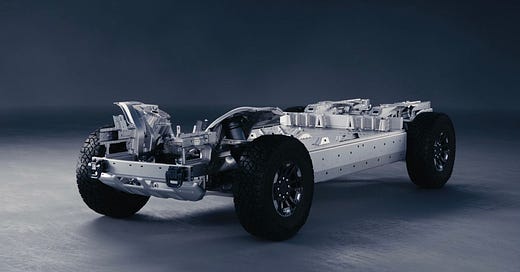
Thanks to those who have shared Full Throttle. The newsletter will be delivered twice a week for free once you subscribe here. Follow me on Twitter, Instagram, and Linkedin.
Imports of Russian vodka, caviar, and diamonds are expected to be banned for Americans as part of the sanctions for Vladimir Putin’s invasion of Ukraine. We can probably do fine without those luxuries. There is, however, another Russian export that is much more important and could seriously affect the rapid move toward electric vehicles (EVs) in the US.
It is the metal nickel. Nickel is used in the lithium-ion based batteries that are the most common in EVs. Last year, according to Global Data, Russia mined 200,000 tons of nickel making it the number three producer in the world. The data firm warned last week that if Russian nickel is sanctioned, the adoption of EVs may slow. The firm suggests sanctions would cause, “EV manufacturing prices to increase further, threatening adoption and decarbonization.”
MARKET SHUT DOWN
Trading in nickel has been a mess since last week when the London market was shut down, trades were canceled, and trading is still shut down (I will leave it to Jane Wells to explain, if she cares to, on Wells $treet).

President Biden discusses the Infrastructure Act at the General Motors Factory ZERO electric vehicle assembly plant, Wednesday, November 17, 2021, in Detroit. (Credit: White House/Adam Schultz)
Long before Putin’s invasion, I was surprised to learn the US government has been trying to do something about battery production and supply chains. When I was taking a deep dive into the Infrastructure law and its spending on charging stations and electric buses, I noticed something surprising. A lot of money has been sent to the Department of Energy (DOE) to create a full battery cell processing “ecosystem” in the US.
BATTERY BLUEPRINT
Why? As President Biden said last month, “China has spent several years cornering the market on many of the materials that power the technology that we rely on.” That was before the upset in the nickel market.
President Biden explaining his "clean energy supply chain" that is funded by the Infrastructure law. (Credit: White House)
More than $6 billion in the Infrastructure law was sent to DOE to build this clean energy supply chain. According to DOE Deputy Assistant Secretary Michael Berube the money will jump-start the entire process of making a battery. The first $3 billion is being released to start building processing facilities that can separate out the needed minerals from what is called feedstock, the raw materials containing the needed minerals.

(Credit: US Department of Energy)
Then other faculties will be funded to refine those materials to battery-grade. The Federal dollars will also be used to build battery cell and pack manufacturing facilities. The final step in this ecosystem is recycling facilities to pull out a lot of those materials from used batteries for re-use.
DECARBONIZATION
When I asked Berube to explain this effort, he went big. He says this is about, “full decarbonization.” He says the technology can make it work and it is time for, “large scale deployment.” “We’ve moved the science a ton. The infrastructure bill is allowing us to get it to market,” he added. DOE produced a blueprint for this plan last summer before the Infrastructure law passed.

(Credit: US Department of Energy)
Berube says there is pressure to move quickly. With the White House goals of cutting greenhouse gases in half by 2030 to battle climate change, the DOE official says this mineral/battery supply chain needs to be created in the next 2-3 years. “We have to make this work,” he says, adding, “we can do it.”
IMPACT AT HOME?
DOE believes this battery ecosystem will be able to supply all the batteries the US needs until the EV market reaches 20% adoption. The US is currently at the 3-4% market level for EVs.
President Biden speaks about breakthroughs in battery recycling. (Credit: White House)
The DOE believes the recycling effort will be able to reclaim about 40% of the reusable materials from old batteries.
That will be helpful because this plan does not fund where the “feedstock,” the original minerals and metals come from. Other agencies, including the Department of Defense, are working on that. But, that is another newsletter.
As the pandemic, China, and now Russia have shown, our supply-chain is fragile. This is a big spend to try and change that.
(Cover image credit: GM)




